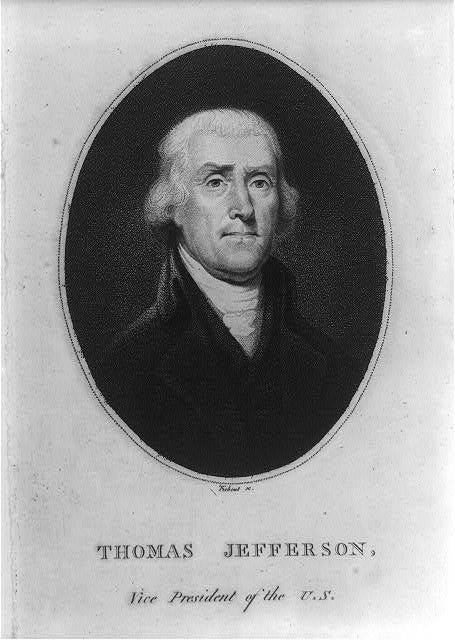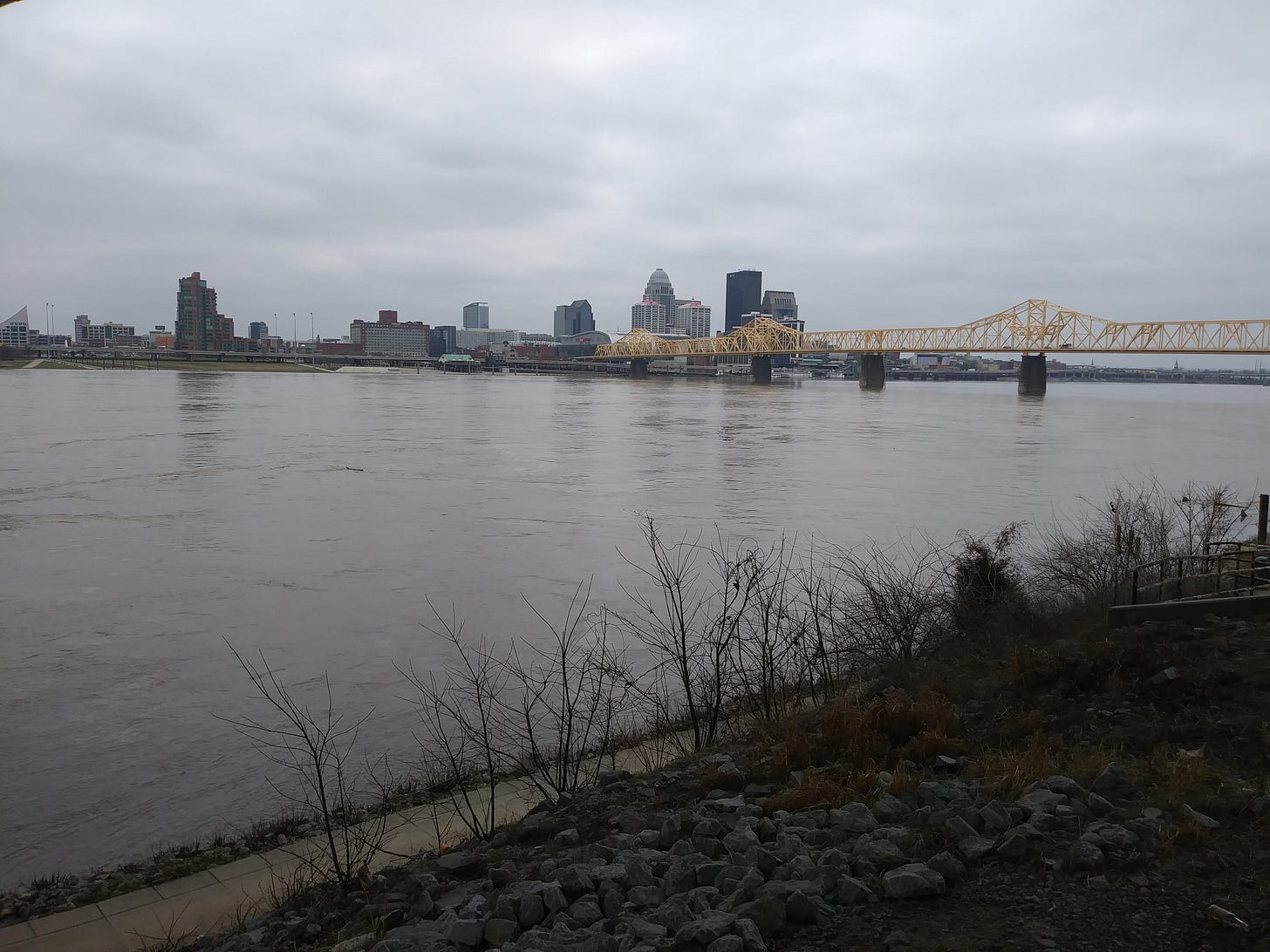JEFFERSONVILLE, INDIANA — The river was like a friend to 9-year-old Ralph Sagebiel. From his small house, Ralph crossed the street and a small field to sit atop the earthen levee that stood between Jeffersonville and the Ohio River.
Beginning at the confluence of the Allegheny and Monongahela rivers in Pittsburgh, Pennsylvania, the Ohio River flowed in a southwesterly direction for nearly 1,000 miles before emptying into the Mississippi River at Cairo, Illinois.
But Ralph’s vantage point was just a mile or so near a bend in the long river. When he looked to the Kentucky shore, he saw the city of Louisville, with its tall buildings reaching toward the sky.
It was no accident the boy lived within steps of the river. People had gathered there for centuries, beginning with Native Americans who fished the waters, hunted game in the woodlands, planted crops such as corn, beans, and squash, and established settlements near the twisting river and its tributaries. Later, riding the Ohio as a highway to the western frontier, along came white settlers seeking trade and land, and sometimes provoking warfare.
A few miles from Ralph’s spot on the levee, Merriweather Lewis and William Clark launched onto the Ohio in the summer of 1803 enroute to St. Louis and the Corps of Discovery expedition that took them and a small band of explorers across a vast wilderness to the Pacific Ocean.
For transportation, food, commerce and recreation, people had come to the river since the beginning of known time. And some, such as young Ralph, simply came to take a long look at the blue-green current and anything else that appeared upon the water.

The name “Ohio” was derived from the Seneca word “oheeyo,” meaning “beautiful water.”
“The Ohio is the most beautiful river on earth,” wrote Thomas Jefferson in the late eighteenth century. “Its current gentle, waters clear, and bosom smooth and unbroken by rocks and rapids, a single instance only excepted.”
The Ohio River — beautiful, gentle and clear in the words of the founding father — had been a friend to many native and immigrant people through the ages.
That also was the case for Ralph’s grandfather, Theodore Adolph Sagebiel, who went by Adolph and rented the small house on East Market Street in which Ralph and seven other Sagebiels lived.
New Life in America
Adolph’s father, Friedrich A. W. Sagebiel — who also went by Adolph — was born in Hanover, Germany, in 1816. At the age of 18, Adolph boarded a ship in Bremen, Germany, to set sail for a new life in America. He carried a small journal that listed sundry notes for conducting his affairs, but the life circumstances that motivated such a daring endeavor were lost to future generations.
Adolph’s mother, Henriette, died when he was 4. His father, Johann, attempted a voyage to America in 1840 at the age of 75 but didn’t survive the journey.
Adolph spent five years in Ohio before buying a farm near the village of Memphis in Southern Indiana. He married Cynthia Ann Griswold in 1842. The couple had two babies who didn’t survive. Cynthia died a short time later.
Adolph married Martha Ellen McDonald in 1848. He and Martha would have seven children over 16 years. Theodore Adolph, the couple’s second son, was born in 1851.
Adolph prospered. In the 1860 United States Census, his land and personal estate were valued at $2,500 and $1,000, respectively. A cooper as well as a farmer, he also made wooden barrels for distilleries.
At the end of their lives around the turn of a new century, Adolph and Martha were laid to rest in a small cemetery near Memphis.
Opportunity on the River
Years earlier Adolph and Martha’s second son left the family farm to pursue opportunities along the Ohio River. The younger Adolph worked as a carpenter and lived with an aunt and uncle in New Albany.
He married and had two children, Ada and Bob, but his wife, Melvina, died within a few years.
In 1890, after moving seven miles to Jeffersonville, Adolph married Sarah Danley, from Versailles, Kentucky. Adolph and Sarah — called “Sallie” — would spend the rest of their lives in Jeffersonville, named for Thomas Jefferson because he drew the original plans for the city.
Adolph went to work for the Louisville & Nashville Railroad and stayed there until he retired at the age of 80.
Looking west from his perch on the levee, Ralph could see the Big Four Bridge, a railroad truss bridge that opened in 1895. The Big Four had been Grandfather Adolph’s route to work six days a week. The 2,525-foot expanse included a single track and a path for pedestrians.

Rising early in the morning, Ralph’s grandfather walked to downtown Jeffersonville and boarded the interurban (a trolley car) to cross the Ohio River. He then took a streetcar to the L&N building in Louisville’s business district.
If Adolph Sagebiel had someplace to go, he walked or he used public transportation, but mostly he walked.
“My grandfather never owned a horse,” Ralph said, “and he never owned a car.”
Ralph remembered his grandfather eating a large breakfast that included round steak, mashed potatoes, gravy, biscuits and stewed tomatoes. Other mornings Adolph sat down to a plate of country ham and red-eye gravy. He returned from work late in the afternoon carrying his black metal lunch pail.
Adolph called his wife “Pud” for reasons unknown to his grandson. He didn’t talk much.
“My Grandfather Sagebiel,” Ralph said, “he worked, and he came home and sat down, went to bed, and got up the next day. That was it.”
During his years working for the railroad, Adolph must have crossed the Ohio River hundreds or even thousands of times. The river was about a half mile wide between Jeffersonville and Louisville.
As the rain would continue to fall in January 1937, the Ohio River would widen to 20 miles in spots and flood nearly all of Jeffersonville. Adolph had seen many things in his 85 years, but nothing like what was soon to come.
Start at the beginning of The 1937 Flood Journal or access the archives.
My Family in the Story
Ralph Sagebiel, father
Theodore Adolph Sagebiel, great grandfather
Freidrich A. W. Sagebiel, great great grandfather
Martha Ellen McDonald, great great grandmother
Sarah Danley Sagebiel, great grandmother
FRIED BOLOGNA: Family Stories from the American Midwest and Upland South Join me for stories about my ancestors who lived, worked and traveled in the hills and along the rivers of Arkansas, Illinois, Indiana, Iowa, Missouri and beyond.






You set the stage for what is to come so vividly, Neil: "As the rain would continue to fall in January 1937, the Ohio River would widen to 20 miles in spots and flood nearly all of Jeffersonville. Adolph had seen many things in his 85 years, but nothing like what was soon to come."
Reminds me of the "before-and-after" of Hurricane Milton this week in Sarasota. I was able to get out before the waters rose eight feet,submerged the beaches and overturned yachts, but the images of all that water, and once- familiar locales literally washed away overnight. . .water can be life giving and devastating and sometimes both at once.
Good amazing